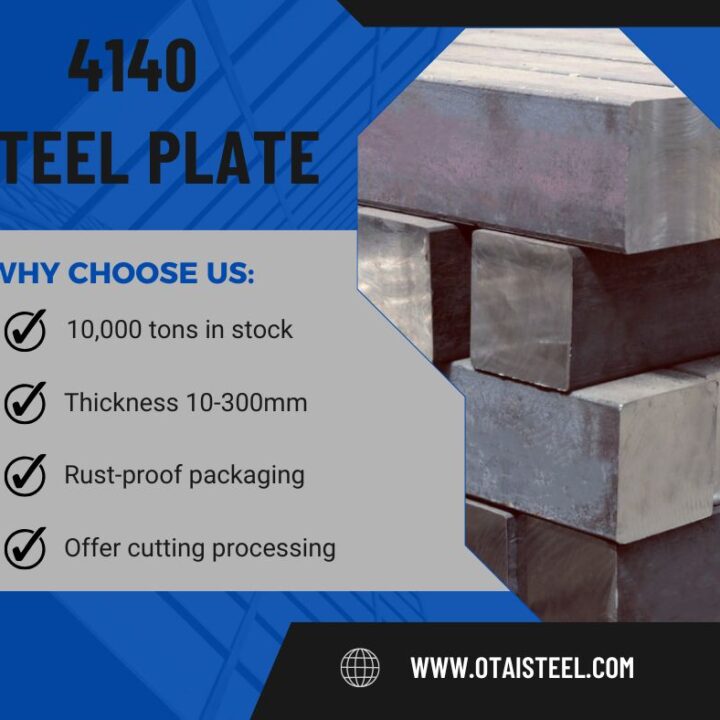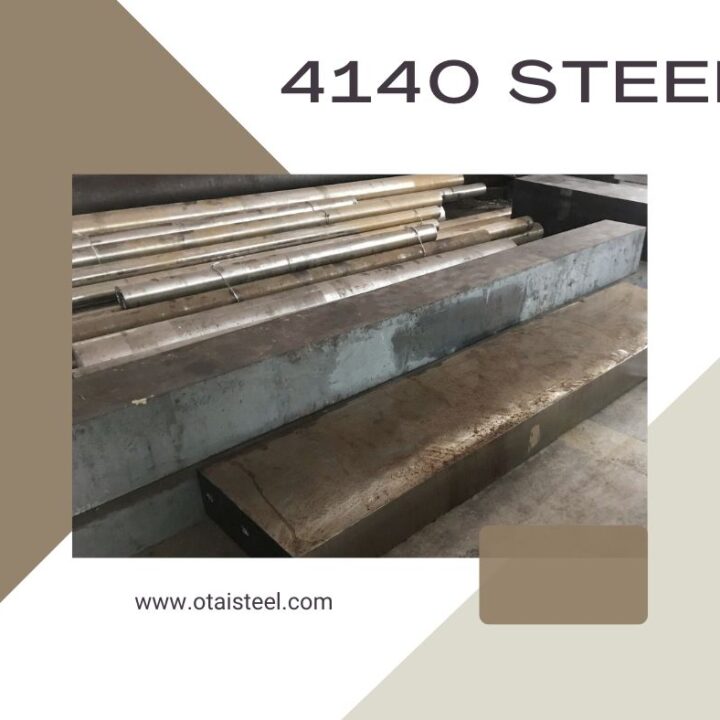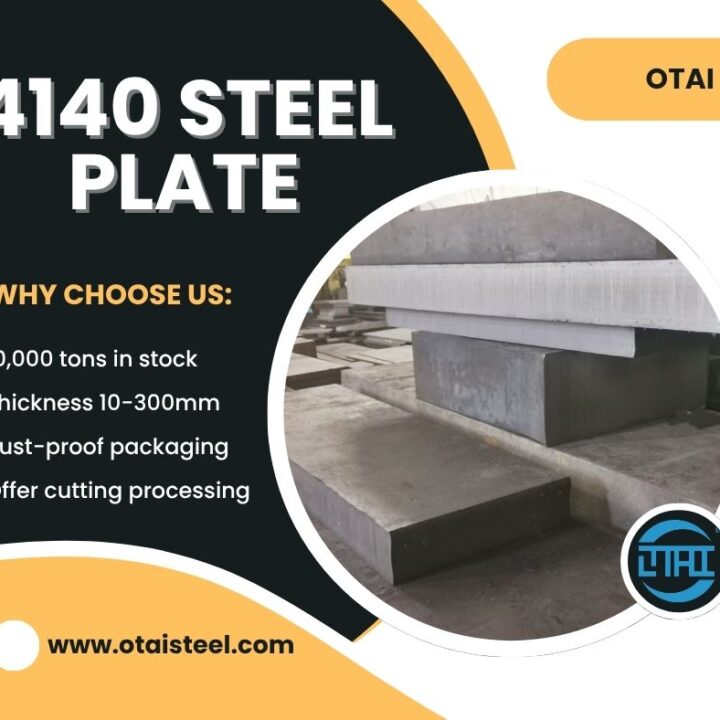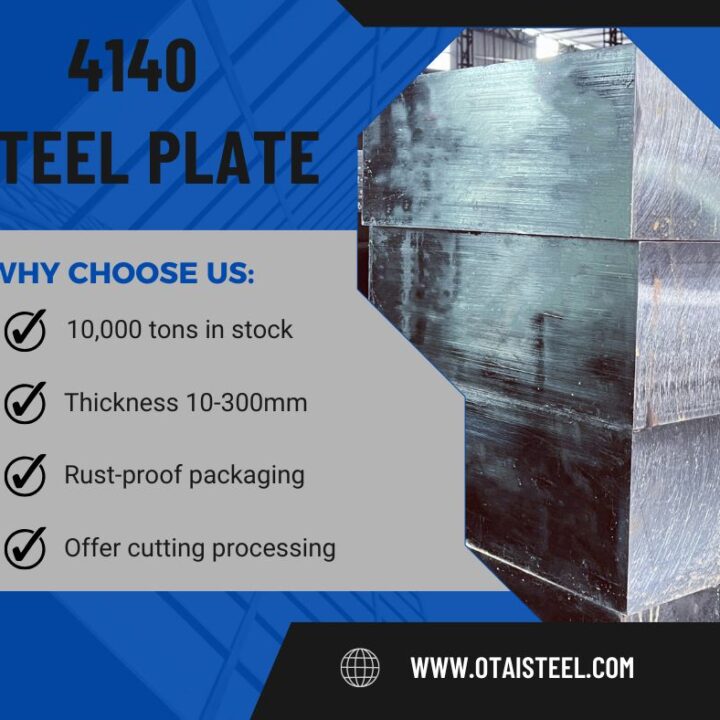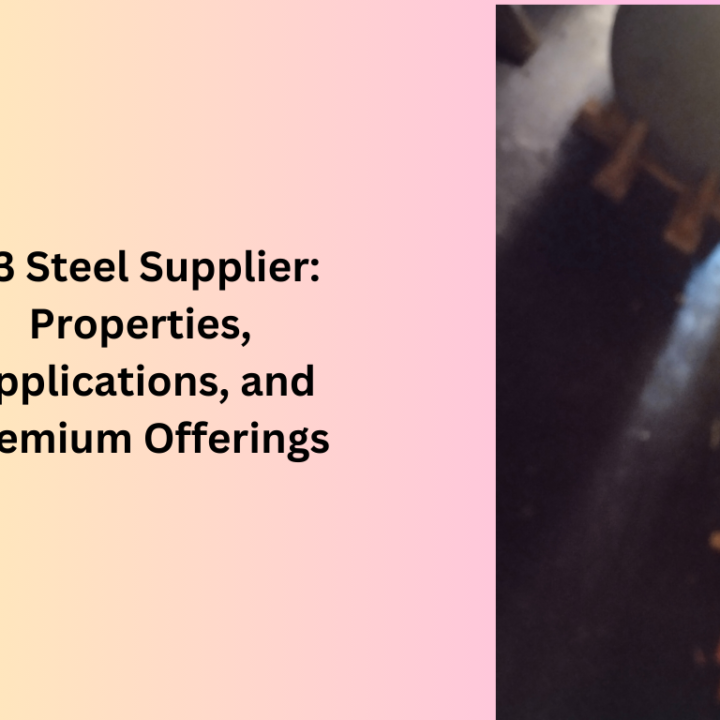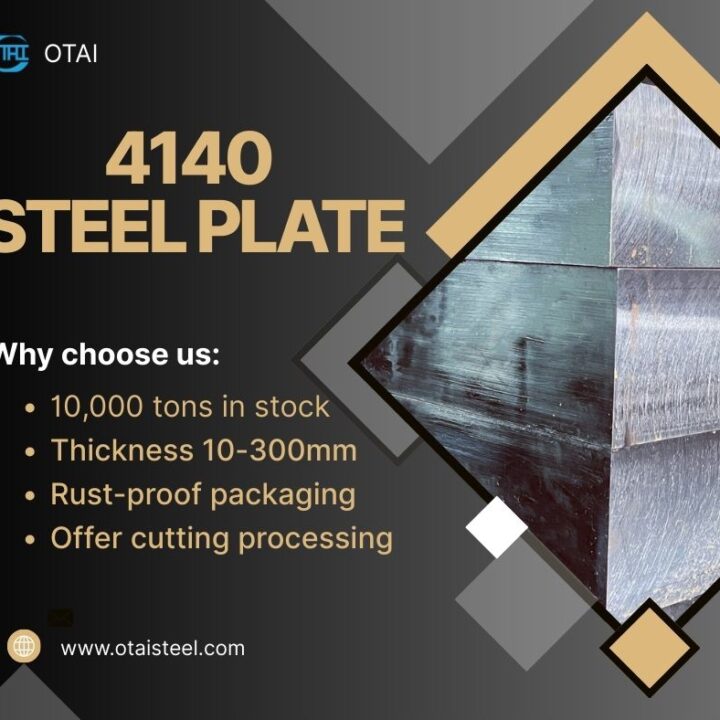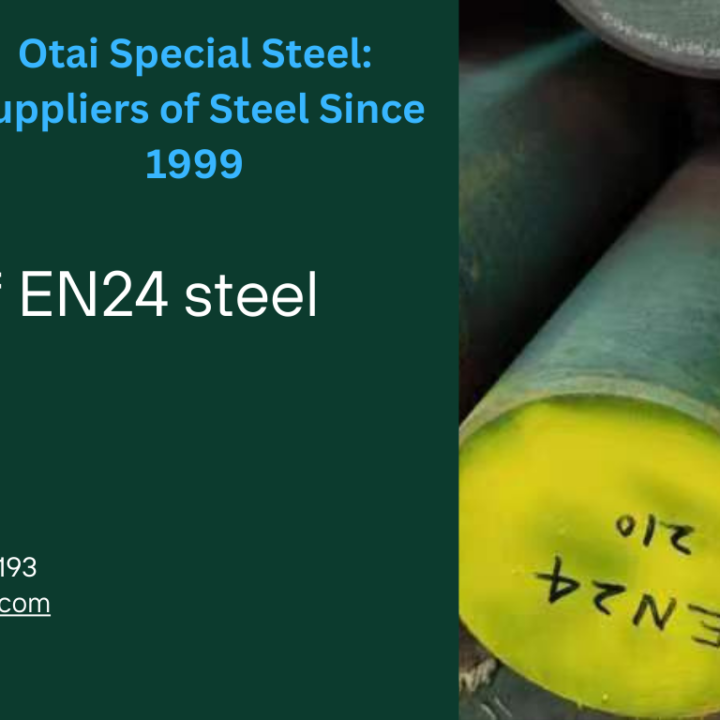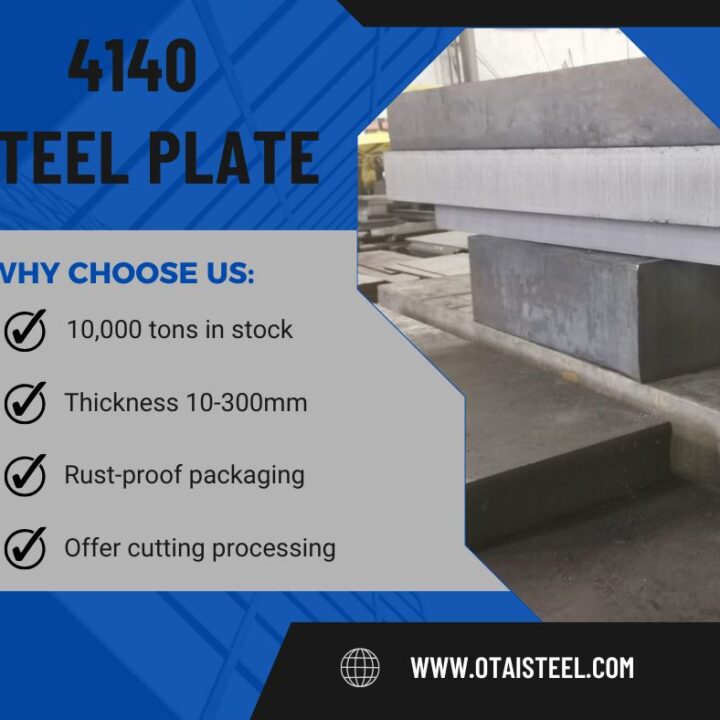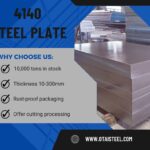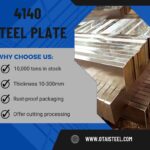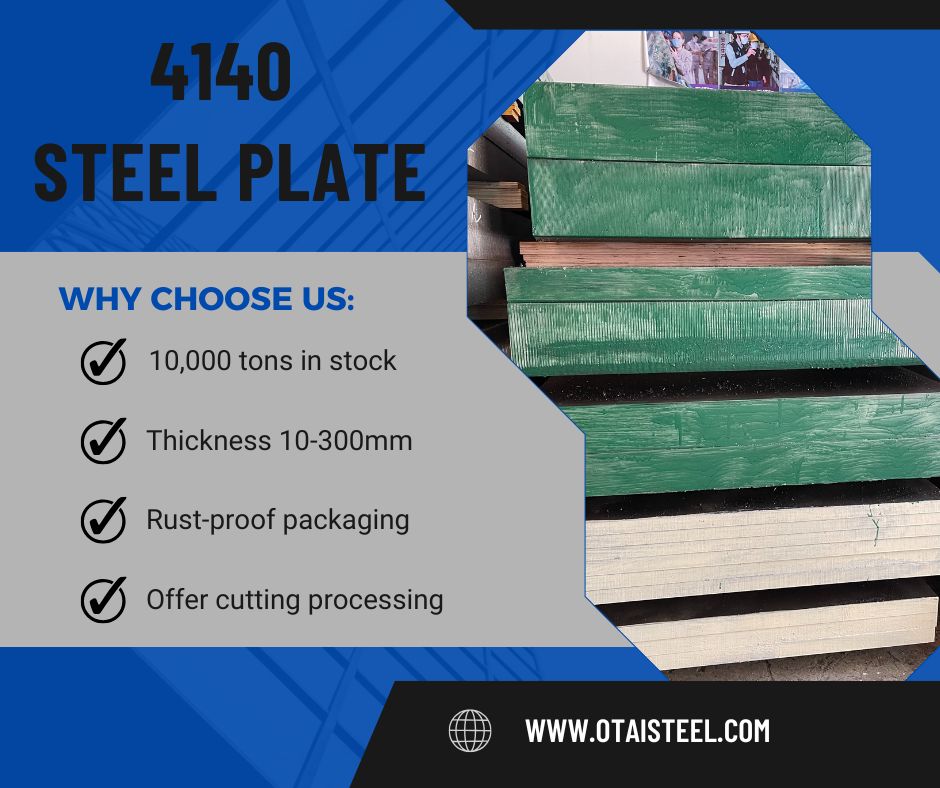
When engineers or buyers search for reliable alloy steels, one of the first materials that comes up is 4140 steel. Its popularity comes from a unique balance of hardness, toughness, and tensile capacity. But what exactly do we mean when we talk about 4140 steel strength? This article dives deep into the mechanical properties, testing data, heat treatment effects, and real-world applications that make 4140 steel a top choice across industries.
🔎 What Is Strength in 4140 Steel?
Strength generally refers to a material’s ability to resist deformation or failure under applied loads. For 4140 steel mechanical properties, we usually focus on:
-
Tensile strength – resistance to being pulled apart
-
Yield strength – point where permanent deformation begins
-
Impact strength – toughness against sudden loads
-
Fatigue strength – endurance against repeated stress cycles
Because 4140 is a chromium-molybdenum alloy steel, its strength can be tailored through heat treatment, such as quenching, tempering, or normalizing.
📊 Mechanical Strength of 4140 Steel
Below is a breakdown of the 4140 steel strength values under different conditions:
| Condition | Tensile Strength (MPa) | Yield Strength (MPa) | Hardness (HRC) | Notes |
|---|---|---|---|---|
| Annealed | 655–850 | 415–550 | ~18–22 | Good machinability, lower strength |
| Normalized | 850–1000 | 650–700 | ~25–28 | Balanced strength and toughness |
| Quenched & Tempered (200°C) | 1600–1800 | 1300–1450 | 50–52 | High strength, lower toughness |
| Quenched & Tempered (500°C) | 950–1100 | 800–900 | 28–35 | Good toughness, balanced properties |
| Oil & Gas Application Grade | 1100–1300 | 850–1000 | ~32–38 | High reliability in harsh environments |
👉 From the table, it’s clear that the strength of 4140 alloy steel can be adjusted significantly depending on the chosen heat treatment.
🌡️ Heat Treatment and Its Impact on Strength
One of the biggest advantages of 4140 is its ability to respond to heat treatment:
-
Annealing lowers hardness and strength but improves machinability.
-
Normalizing provides uniform grain size, improving toughness.
-
Quenching and tempering 4140 steel maximizes tensile and yield strength, making it ideal for gears, shafts, and structural components.
This tunable property is why 4140 quenched and tempered steel strength is widely used in demanding industries.
🛠️ Real-World Applications of 4140 Steel
Because of its strength-to-toughness ratio, 4140 is chosen in sectors such as:
-
Automotive – crankshafts, axles, and gear shafts
-
Aerospace – landing gear components
-
Oil & Gas – drill collars, subs, and downhole tools
-
Industrial machinery – rollers, hydraulic cylinders, and press tooling
-
Tooling industry – dies, molds, and wear-resistant parts
For example, a quenched and tempered 4140 steel shaft strength ensures it can transmit torque under high stress without bending or breaking.
🔬 Case Study: Gears Made from 4140 Steel
In gear manufacturing, surface strength is critical to withstand repeated loading. By tempering 4140 at 400–450°C, gears achieve around 38–42 HRC hardness with tensile strength above 1250 MPa. This balance prevents premature wear while ensuring the teeth resist cracking during high torque transfer.
This makes 4140 steel tensile strength highly suitable for automotive transmissions and heavy-duty machinery.
📐 Comparison of 4140 Steel Strength with Other Alloys
| Steel Grade | Tensile Strength (MPa) | Yield Strength (MPa) | Toughness | Typical Use |
|---|---|---|---|---|
| 4140 | 950–1800 (heat-treated) | 650–1450 | High | Shafts, gears, cylinders |
| 1045 | 570–700 | 300–350 | Medium | General machinery parts |
| 4340 | 1080–1860 | 850–1400 | Very High | Aerospace, defense |
| 8620 | 850–1000 | 650–750 | High (case-hardened) | Gears, camshafts |
👉 Clearly, 4140 steel high strength positions it between general carbon steels like 1045 and high-alloy steels like 4340.
📊 Key Factors That Influence 4140 Steel’s Strength
Several factors affect the final strength values:
-
Heat treatment cycle (temperature, cooling rate, tempering range)
-
Size and geometry of the component (larger parts may retain lower hardness at core)
-
Surface finish – rough surfaces reduce fatigue strength
-
Stress concentration points – sharp corners may reduce effective strength
That’s why engineers often request 4140 steel tensile strength chart data before selecting the correct grade for their project.
🏆 Company Advantages – Why Otai Special Steel?
At Otai Special Steel, we specialize in supplying 4140 steel with guaranteed strength properties, tailored to client requirements. Our strengths include:
-
📦 Extensive inventory – over 10,000 tons of 4140 plates, bars, and tubes in stock.
-
🔍 Reliable testing – tensile testing, UT inspection, and third-party certification (SGS, TUV).
-
⚙️ Custom processing – heat treatment, cutting, CNC machining, and mechanical testing.
-
🌍 Trusted globally – suppliers to automotive, oil & gas, and aerospace clients worldwide.
-
🚀 Quick delivery – stable supply chain ensuring timely shipments.
❓ FAQ
Q1: How strong is 4140 steel compared to mild steel?
4140 is 2–3 times stronger than mild steels like A36, especially after quenching and tempering.
Q2: What is the typical tensile strength of quenched and tempered 4140 steel?
It ranges from 950–1800 MPa depending on the tempering temperature.
Q3: Does 4140 steel maintain strength at high temperatures?
Yes, it has good strength retention up to 400°C, but prolonged exposure above this can reduce hardness.
Q4: Can 4140 steel be surface-hardened to increase strength?
Yes, carburizing or nitriding can be applied to improve surface hardness while maintaining core toughness.
Q5: Does Otai supply 4140 steel with specific strength requirements?
Absolutely—we offer material certification with precise tensile and yield strength data.
👉 In summary, 4140 steel’s strength makes it one of the most versatile alloy steels in the market. With adjustable properties through heat treatment, it serves industries that demand both power and reliability, from gears and shafts to aerospace components.

